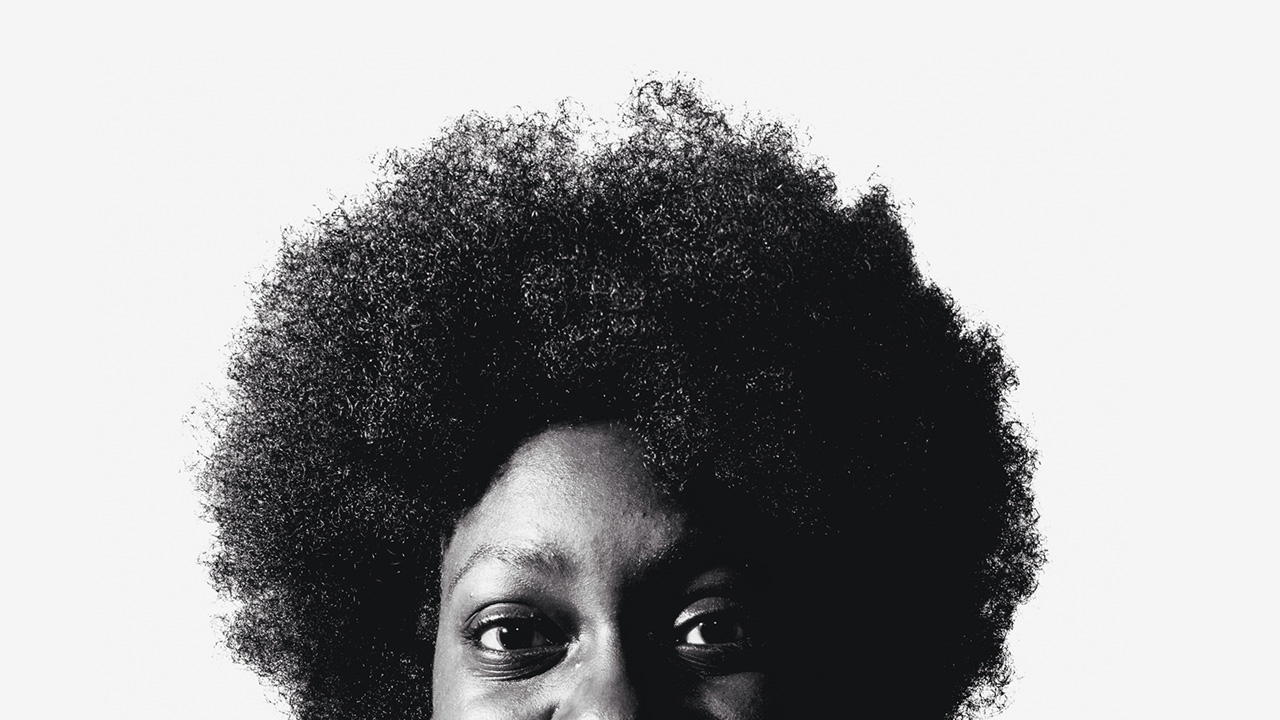Blog:
Keisha Thompson
The first Black artistic director of Manchester theatre Contact explains why its new youth production is inspired by the Halo Code to protect people with afro-textured hair
I love words. As part of my role as the new artistic director at Contact I get to share that passion in a variety of ways. So far, I’ve been writing weekly tankas – a form of Japanese poetry – to promote shows, had a Cocktails & Cinquains poetry night for my welcome event, and celebrated the 50th anniversary of Contact by locking a brilliant poet, Georgie B, in the building for 50 hours to write a 50 word poem. So the poetic campaign is going well so far.
Most words have more than one meaning and have a wonderful history waiting to be unpacked.
Halo: “A reflection of light caused by ice crystals in the air often seen as a band around the sun or the moon”
Or: “Anything seen like this caused by imperfect development in photographs”
Or: “A luminous ring, often gold, floating above the head”
There are more definitions than this, and I’m super-excited to explore them with Contact Young Company (CYC) to create our next show. One of the best parts of this job is getting to work with CYC (formerly known as CYAC for serious alumni). There is nothing more exhilarating (and a little bit terrifying) than getting in a room with about 20 creative people and being challenged to shape all the ideas and the energy flying around it.
As the director, you have to come with a provocation or an angle to kick it all off. I am bringing the word “halo”. As we’ve seen, it is bursting with meaning. But right now, for me the word represents the “Halo Code”. The Halo Code is a brilliant campaign from the Halo Collective, which is striving to protect people with afro-textured hair from being penalised in schools and workplaces for having natural and culturally-specific hairstyles.
At first, afro hair might seem like a frivolous topic. However, it only takes a few facts and statistics to realise that it is a politic issue.
Only last year, it became compulsory by the National Occupational Standards to include afro hair in hairdresser training.
The Black Care Experience report in 2021 reported a significant number of testimonies from care-experienced Black people who had traumatic experiences of carers, teachers and other responsible adults not knowing how to do their hair.
A World Afro Day survey in 2019 found that one in six children are having a bad or very bad experience at school connected to their afro-textured hair and identity. This includes anti-afro policies in schools and exclusions.
Despite hair being a part of the protected characteristics under race in the Equality Act 2010, these statistics and many others show that there is a lot of work to do.
As a part of making this show, Contact has signed up to the Halo Code. Whenever I make a piece of work, I consider how it fits into the world. What is the potential impact, both for the artists involved to be stimulated as creative beings but also the impact on the world? Can we get schools and organisations to sign up to the Halo Code? Can we get more care workers and teachers to learn how to style afro-textured hair? Let’s see.
What on earth are we going to come up with? I don’t know but I’m buzzing!
Strict targets for the show are a must for me. As a part of my process, I enjoy setting very particular parameters. This show is going to consist of advert poems, songs and movement. In addition to the Halo Code, we will respond to Emma Dabiri’s book Don’t Touch My Hair and the well-known Solange Knowles song with the same name.
We are working with the astoundingly talented Al Conteh as the assistant director. I’m probably missing something but he is a dancer, animator, poet, videographer and musician. Together, we will push the company to fuse all they know and do not know about halos within this lens.
What on earth are we going to come up with? I don’t know but I’m buzzing! I cannot wait for the questions, the confusion, the discoveries, the laughter, the tears, the lights, the held breath and the moment at the end when you look back flabbergasted by what you’ve just made. I always trust that it will be brilliant. It may not be what you expect but who wants that anyway?
That’s not how you find beauty. As one of the definitions of halo tells us – a colour band is a reflection of light caused by imperfect development in photographs.
Halo is at Contact on 24-26 October

Leave a reply
Your email address will not be published.